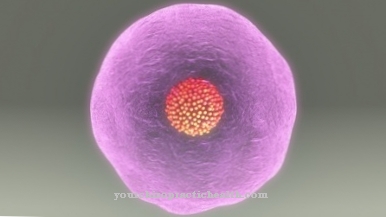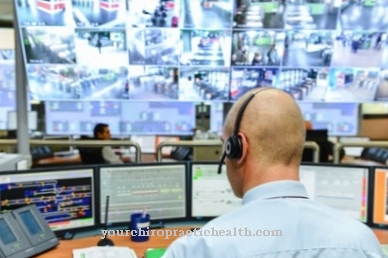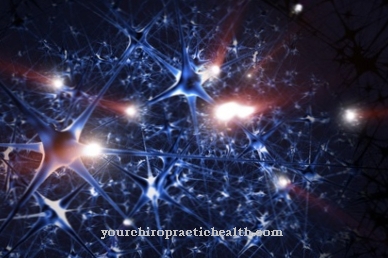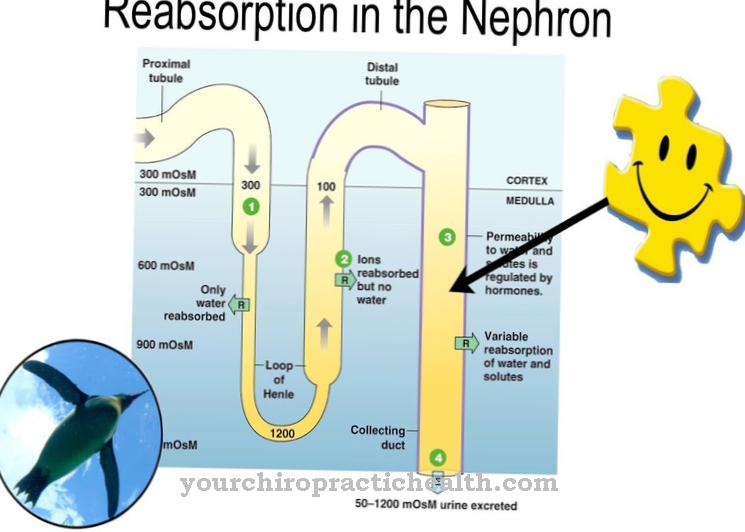The eye movement serves all aspects of vision and is partly controlled by reflexes that are triggered by self-movement and z. B. capture and track an object. The image is placed and held in the center of the yellow spot, i.e. in the fovea. As soon as an object moves, subsequent movements of the eye are triggered, which at some point reach their limits and are interrupted by rapid and jerky movements, called saccades. Eye following movements are important conditions for optimal vision.
What are eye following movements?

When moving, it becomes necessary to move the eyes with the targeted target so that the actual image can still be held in the fovea.The speed of the eye movement must therefore adapt to the speed of the targeted and moving object.
The movement pattern of the eyes is made up of three different functions when a target or object is sighted. On the one hand, and with information transfer to the central nervous system, fixation takes place, a holding function of the current object or target, whereby the eyes remain focused on this until the signals and information have been recorded and transmitted. On the other hand, an object is noticed by jumps in the gaze, with the eye movements jumping from one point to the next, through muscle movement, jerkily and so z. B. the orientation in space or the recording of individual letters when reading a text. The third component is eye tracking, an ability to follow moving targets and objects through a sliding eye movement. If this is interrupted or does not take place at all, there may be a risk. a. a disturbance in the coordination of both eyes and it can lead to asthenopic symptoms, which are caused by overexertion of the visual apparatus.
Function & task
The eye movement is primarily used to stabilize the view of a moving object. Initially, the eyes are still stationary and the image shift over the retina (retina) is not compensated. Only after about 100 milliseconds do the eyes begin to move and trigger imperceptible delays that occur due to the visual processing. The image shift is minimized and the input signal is captured by eye movements.
While saccades are used to briefly perceive objects within milliseconds without directly grasping them, the movement of the eyes is more gliding and tied to the perceived object. Eye tracking cannot take place in total darkness or without a targeted target. Rather, the gaze would jump from one point to the other through saccades. On the other hand, an eye following movement compensates a moving object as a fixed point. This also includes the sensory modalities and the viewer's ability to imagine. The eye movement also plays a decisive role in reading in order to grasp the letter as a row and finally as a word and sentence.
The image or object is always repositioned in the fovea. This process works in a similar way to a simple control loop, whereby an image shift takes place on the retina that the person himself does not notice. During the object tracking, the retinal afference is corrected by a signal that determines how many eye movements are necessary to move the image. This leads to seeing an illusionary movement during eye tracking until the image is stabilized. Nevertheless, a movement and change in the object is perceived, as is the background movement itself.
Humans are therefore able to detect moving targets without delay and to keep an eye on the object. No actual retinal image movement is perceived, the visual background is shifted across the retina, the speed being adapted to the eye movement.
You can find your medication here
➔ Medicines for eye infectionsIllnesses & ailments
In previous research, medicine mainly focused its attention on the mechanical aspect of eye movement. In the meantime, however, this is also being tested with regard to perception and the associated processing of visual stimuli and information. This particularly provides information about whether the cerebellum works and how the visual short-term memory works. An examination of the eye following movement gives z. B. some indications of central vestibular damage if the eye movement is completely or only partially disturbed.
Eye tracking disorders also occur when there is damage to the cerebellum. Then the motor ability of the eye movement is mostly completely lost. If this is impaired, it can, among other things, be an indication of various medical conditions, including schizophrenia. With this clinical picture in particular, the expression and course are extremely varied, so that in medicine one looks for certain, basic character symptoms in order to be able to make a better diagnosis. This also includes eye-following behavior, as it is easy to register and analyze.
The gaze tracking system takes place via association fields, which in turn are controlled via the control center of the brain stem and via the cerebrum and cerebellum. This makes it possible to narrow down functional or structural damage that allows conclusions to be drawn about the entire topography based on a certain disorder pattern, thus also enabling brain stem diagnostics, which in turn can reveal a schizophrenic disease.
In addition to impaired motor functions, in schizophrenia the movements of the eyes are usually also disturbed. There is empty staring or frequent blinking. In addition, the saccadic reaction time is greatly extended, which in turn means that the target is not hit, is underestimated or overestimated and frequent correction saccades take place.



























